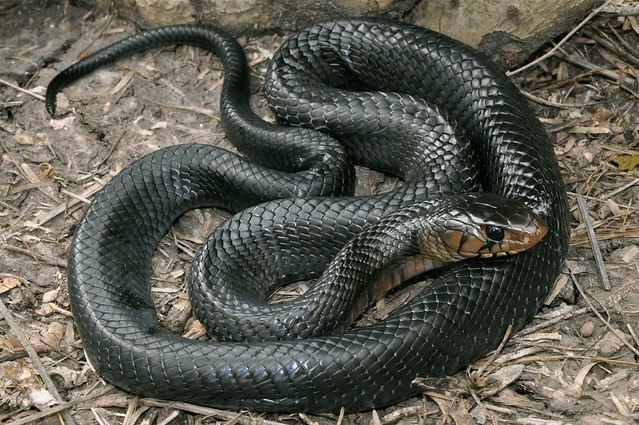 |
| https://www.flickr.com/photos/jtwilliams10/6855573650/ |
The indigo snake belongs to the Colubridae family.
The indigo snake is a big, black snake, eighty four inches in length. The chin and head are red/orange colour. In the sunlight the scales look purple. The young look identical to the adults but the red and orange are more prominent. They are sexually dimorphic meaning the males can turn into females. The males are seven feet and the females are six feet long.
They are active in the daytime only. When they feel threatened or under attack they hiss, vibrate tail and flat their heads. They feed on birds, snakes, small mammals and frogs. They have powerful jaws by biting down onto the prey ans swallow the prey whole.
They are found pine and oak forests, wetlands, swamps and sand hills. The snakes use the gopher tortoise burrows to hide from the elements and to nest.
They breed during the colder, winter months. They reach sexual maturity at five years old. There is a lot competition for females, so the males fight but biting and wrapping their bodies round each other. The females lay around fourteen eggs in April through to June. The eggs hatch in August.
Oriannesociety.org, (2015). Eastern Indigo Snake | The Orianne Society. [online] Available at: http://www.oriannesociety.org/eastern-indigo-snake [Accessed 14 Apr. 2015].
Srelherp.uga.edu, (2015). Species Profile: Eastern Indigo Snake (Drymarchon couperi) | SREL Herpetology. [online] Available at: http://srelherp.uga.edu/snakes/drycou.htm [Accessed 14 Apr. 2015].
No comments:
Post a Comment